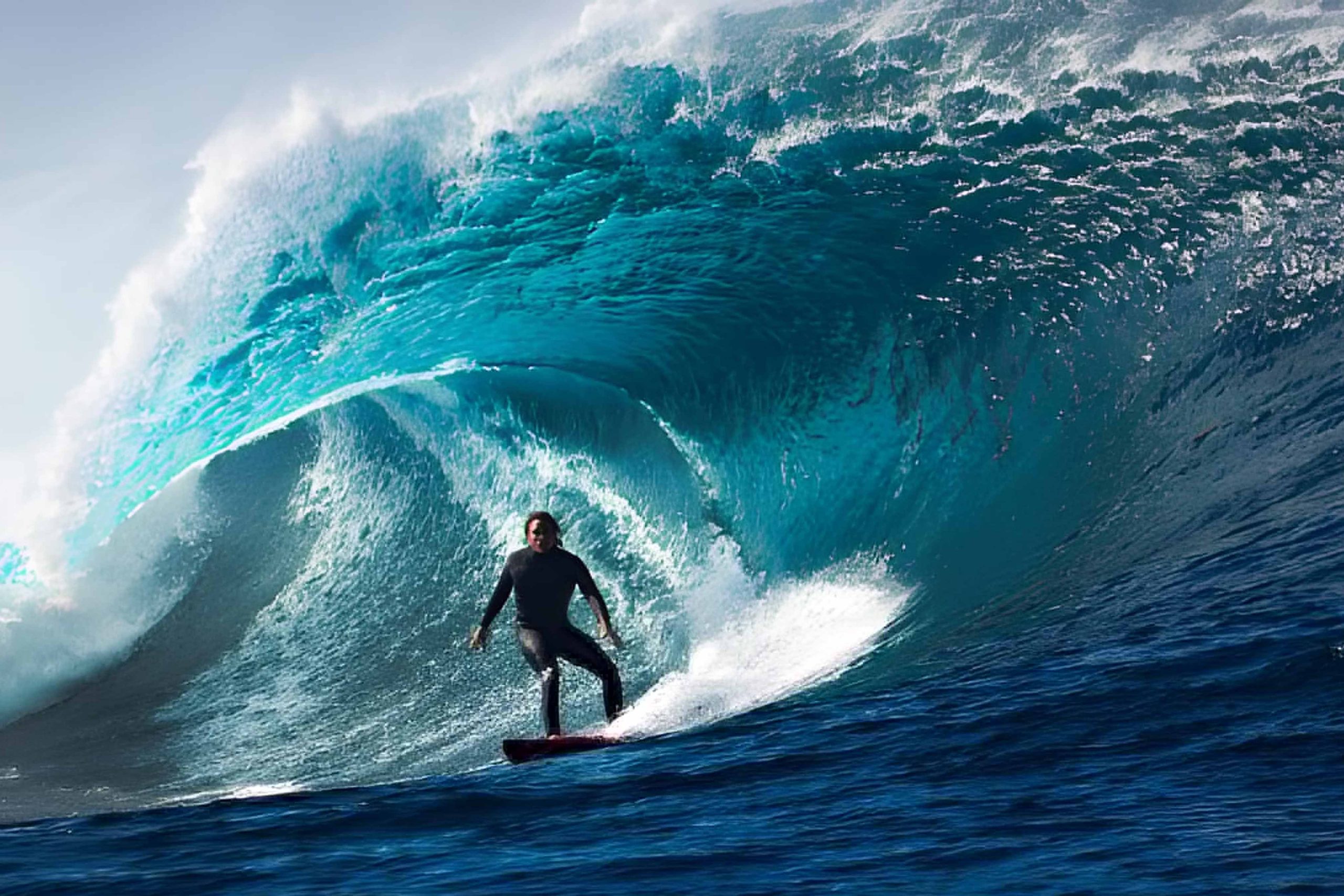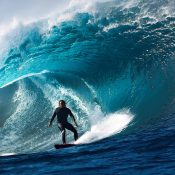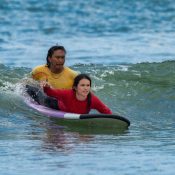ISA Level 1 Surf Instructor: Complete Guide to Requirements & Skills

ISA Level 1 Surf Instructor: Complete Guide to Requirements & Skills
Dreaming of turning your passion for surfing into a career? The ISA Level 1 Surf Instructor certification is your golden ticket to teaching professionally around the world. But what does it really take to pass this internationally recognized qualification?
As an ISA-certified surf school, we've helped dozens of aspiring instructors navigate the certification process. The truth is, many competent surfers underestimate what's required—not just in surfing ability, but in teaching skills, ocean knowledge, and safety protocols.
This comprehensive guide breaks down exactly what you need to know, demonstrate, and master to earn your ISA Level 1 Surf Instructor certification and start your professional teaching journey.
Table of Contents
Toggle1. What is the ISA Level 1 Surf Instructor Certification?
The Global Standard for Surf Instruction
The International Surfing Association (ISA) Level 1 is the most recognized surf instructor certification worldwide, providing:
- International teaching credibility
- Insurance eligibility in most countries
- Standardized safety and teaching protocols
- Professional development pathway to higher levels
Course Structure & Components
The certification typically involves 3-5 days of intensive training covering:
- Practical surfing assessment
- Teaching methodology and theory
- Ocean safety and rescue skills
- First aid and CPR certification
- Final theoretical and practical exams
Read also: Surf Levels: How to Understand Where You Are with Your Surfing
2. Essential Surfing Skills & Level Required
Minimum Surfing Competence Level
To have a realistic chance of passing, you should comfortably demonstrate:
Wave Riding Skills
- Consistent takeoffs on unbroken waves
- Controlled bottom turns and top turns
- Ability to ride both frontside and backside
- Speed generation and maintenance along the wave face
- Competence in waves up to 4 feet (1.2 meters)
Paddling & Ocean Skills
- Strong paddling endurance (200+ meters without exhaustion)
- Efficient duck diving or turtle rolling technique
- Confident wave reading and positioning
- Ability to handle rips and currents
Specific Maneuvers You Must Demonstrate
| Required Skill | Demonstration Standard |
|---|---|
| Takeoff | Consistent, balanced takeoffs on green waves |
| Bottom Turn | Controlled, purposeful direction changes |
| Top Turn | Basic speed control and re-entry |
| Trim | Maintaining speed along wave face |
| Stance | Balanced, functional positioning |
| Wave Selection | Choosing appropriate teaching waves |
3. Teaching & Communication Skills
The Instructor Mindset Shift
Passing the ISA Level 1 Surf Instructor certification requires more than surfing ability—it demands teaching competence:
Essential Teaching Skills
- Clear communication: Breaking down complex movements into simple steps
- Demonstration ability: Performing skills correctly while explaining
- Student assessment: Identifying and correcting common errors
- Safety briefing delivery: Confident, comprehensive safety talks
- Adaptive teaching: Modifying approach for different learning styles
Teaching Methodology Knowledge
You'll need to understand and apply:
- Progressive skill development frameworks
- Land-based versus water-based teaching methods
- Equipment selection and adjustment for students
- Lesson planning and structure
4. Ocean Knowledge & Safety Requirements
Comprehensive Ocean Safety Competence
Safety is the highest priority in the ISA Level 1 Surf Instructor certification:
Required Safety Knowledge
- Rip current identification and escape procedures
- Wave dynamics and hazard assessment
- Marine life awareness and response
- Weather and tide interpretation
- Emergency action plans and protocols
Rescue & Emergency Skills
- Board rescue techniques
- Conscious and unconscious victim recovery
- Beach-based rescue methods
- CPR and basic first aid application
- Communication and emergency service coordination
Equipment Safety Knowledge
- Appropriate board selection for different conditions and students
- Leash attachment and safety checking
- Fins and their safety implications
- Wetsuit and equipment fitting for safety and comfort
5. Theoretical Knowledge & Exam Components
Classroom & Written Exam Content
The theoretical component covers:
Surfing Science & Theory
- Wave formation and forecasting
- Surfboard design and hydrodynamics
- Physiological aspects of surfing
- Psychological factors in learning
Teaching Theory
- Learning psychology and motor skill development
- Lesson planning and progression
- Risk assessment and management
- Business and professional ethics
Sample Written Exam Topics
- Developing a beginner surf lesson plan
- Identifying and correcting common pop-up errors
- Emergency scenario response planning
- Equipment selection justification for specific students
- Local hazard assessment for a new beach
6. Bali-Specific ISA Certification Considerations
Local Conditions & Adaptations
Bali presents unique opportunities and challenges for ISA Level 1 Surf Instructor candidates:
Advantageous Conditions
- Year-round warm water (no wetsuit complications)
- Consistent wave availability for testing
- Multiple break types for varied assessment
- Established surf school infrastructure
Challenges to Overcome
- Crowded lineups requiring advanced awareness
- Strong currents and powerful waves at some breaks
- Reef bottom hazards and safety considerations
- International student communication challenges
Recommended Bali Preparation Spots
| Break | Best For Practicing | Skill Focus |
|---|---|---|
| Kuta Beach | Beginner teaching simulations | Safety management, basic instruction |
| Batu Bolong | Intermediate teaching scenarios | Crowd management, wave selection |
| Sanur | Controlled conditions | Technical teaching, calm environment |
7. Physical Fitness Requirements
Minimum Fitness Standards
While no specific fitness tests are mandated, you should comfortably handle:
Endurance Requirements
- 30+ minutes of continuous paddling
- Multiple surf sessions per day
- Rescue tows of 50+ meters
- Beach running and quick water entries
Strength & Mobility
- Strong push-up and pop-up capability
- Core strength for demonstration stability
- Shoulder mobility for paddling and rescue
- Overall fitness to model healthy surfing
Recommended Pre-Course Training
- 8 weeks out: Focus on paddling endurance and pop-up consistency
- 4 weeks out: Practice teaching friends and analyzing technique
- 2 weeks out: Mock safety briefings and scenario planning
- 1 week out: Light maintenance and mental preparation
8. Common Reasons Candidates Fail
Technical Surfing Deficiencies
- Inconsistent wave catching ability
- Poor demonstration quality for beginners
- Limited wave reading and positioning skills
- Insufficient backside surfing competence
Teaching & Safety Failures
- Inadequate safety briefings or risk assessment
- Poor communication and instruction clarity
- Unable to identify and correct student errors
- Weak emergency response planning
Theoretical Knowledge Gaps
- Insufficient understanding of learning principles
- Poor lesson planning and progression knowledge
- Limited equipment and ocean science understanding
- Weak exam performance on written components
9. FAQ: ISA Level 1 Surf Instructor Certification
You should be comfortable in head-high waves, able to catch 8/10 waves you paddle for, and demonstrate basic maneuvers competently. Competitive surfing ability is not required.
Most courses run 4-5 days intensively, plus pre-course preparation and potential follow-up assessment.
Typically 70-80% for well-prepared candidates. Most failures come from inadequate preparation rather than lack of surfing ability.
Yes, you must be at least 16 years old to certify, though some schools recommend 18+ for teaching employment purposes.
The ISA Level 1 certification is valid for 2 years before requiring a water safety update, and 4 years before full recertification.
No, the practical surfing assessment is a mandatory pass component. Weak surfing cannot be compensated by strong theoretical knowledge.
Most courses include CPR and basic first aid, but requirements vary by country and course provider.
Prices range from $400-$800 depending on location, included components, and course duration
Conclusion: Your Pathway to Professional Surf Instruction
The ISA Level 1 Surf Instructor certification represents more than just a piece of paper—it's your commitment to professional standards, student safety, and quality surf education. While the requirements are comprehensive, they ensure you're prepared for the responsibilities of teaching in dynamic ocean environments.
The most successful candidates approach the certification as an opportunity to deepen their own surfing knowledge while developing the skills to share this incredible sport with others. Remember that the assessment isn't about being the best surfer in the water—it's about being a safe, effective, and knowledgeable instructor.
At Sōleïa Surf Academy, we've seen how proper preparation transforms anxious candidates into confident, certified professionals. Your journey to becoming an ISA Level 1 Surf Instructor starts with honest self-assessment and dedicated preparation.
Ready to start your instructor journey?
Recent Posts
ISA Level 1 Surf Instructor: Complete Guide to Requirements & Skills
Surf Holidays Packages in Bali Compared (Price, Inclusions & Reviews)
How to Progress in Surfing: Landlocked Training Guide
Start From € 5125,-
Our 12-weeks
Surf Academy Program in Bali





